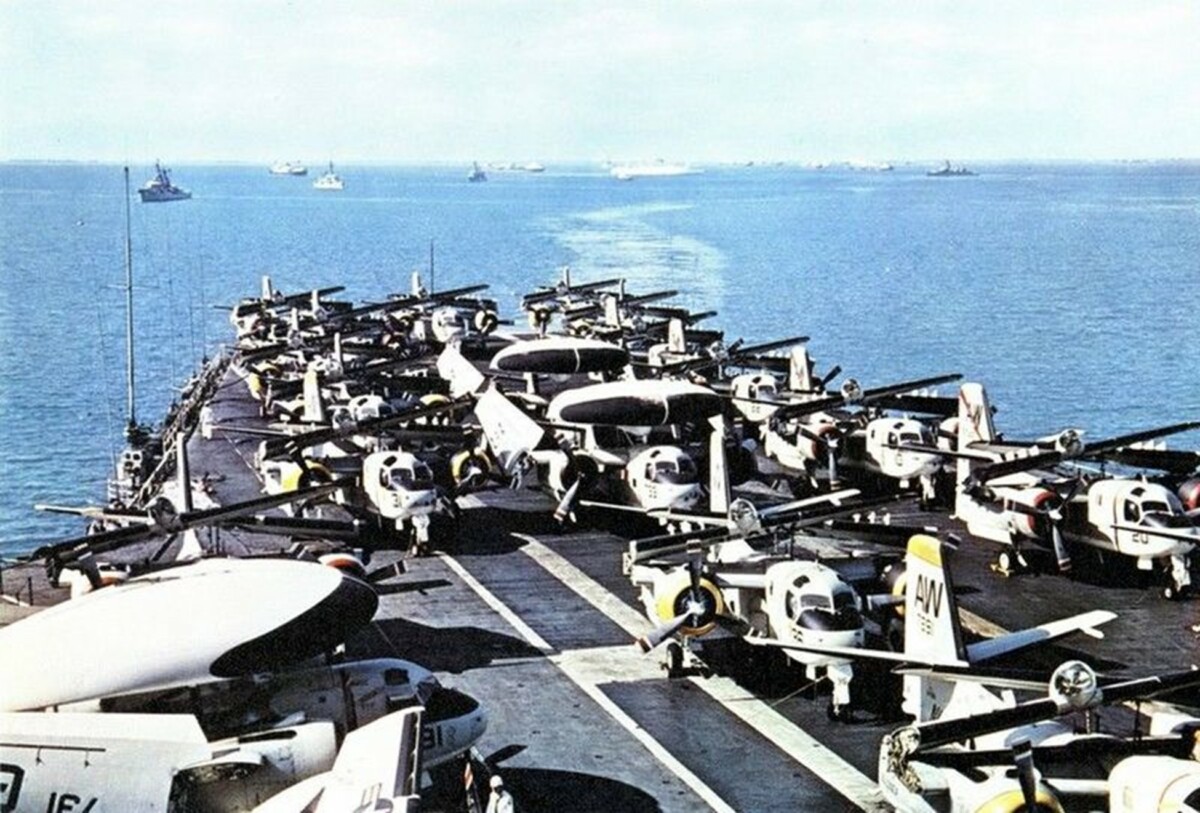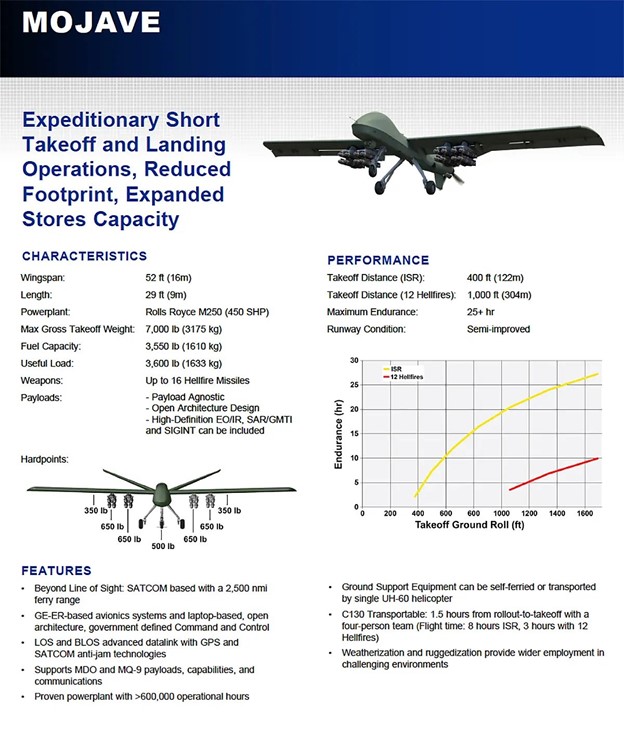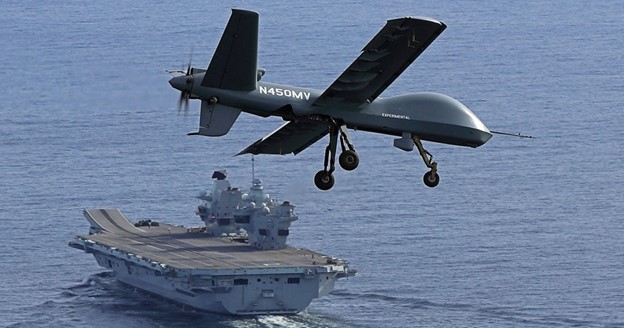The U.S. Must Produce UAV ASW Escort Carriers to Counter PLAN Subs
During the Cold War (1945-1989), the U.S. Navy possessed Anti-Submarine Warfare (ASW) Hunter-Killer Groups centered around converted Essex-Class carriers designated “CVS”. Their purpose being to hunt down Soviet submarines in the event of war.[1] Our Navy has a tradition of carrier based ASW teaming, but for Cold War II we have no dedicated ASW aircraft carriers. As Beijing’s shipyards continue to pump out more advanced and capable submarines, we must relearn old habits which were not necessary in our post-Cold War unipolar world.
The Navy should invest in several unmanned
aerial vehicle (UAV) light aircraft carriers (CVQ) capable of high speed and
attrition. The CVQ’s purpose would be to
hunt down marauding People’s Liberation Army Navy (PLAN) submarines within the
second island chain and beyond, protecting logistics centers and bases critical
to the sustainment of a joint campaign.
Beyond a near peer conflict, these units would be able to operate
precise and persistent strike ISR upon violent extremist organizations (VEOs)
from mobile air bases close to their shores, without the need for status of
forces agreements.
According to the 2023 Department of
Defense report to Congress on “Military and Security Developments Involving the
People’s Republic of China”, “The PRC launched two SHANG III (Type 093B)-Class
guided missile nuclear attack submarines (SSGN) between May 2022 and January
2023 and could have three hulls of this class operational by 2025. This new SHANG-class variant will enhance the
PLAN’s anti-surface warfare capability and could provide a clandestine
land-attack option if equipped with land-attack cruise missiles (LACM).”[2] These new SSGNs could render many Allied
units operationally paralyzed in the opening stages of conflict in the Pacific.
The new PLAN SSGNs can be found, fixed,
and finished (F3) if they tread deep into the Allied rear areas of the Central
Pacific prior to the decision for war where their launch distance and reaction
time upon their targets can be minimized to full effect if intermixed with
other boats attempting to make trouble as far east as the U.S. West Coast and
Panama Canal.[3] The utilization of the remotely piloted
aircraft and the recent demonstrations of carrier landings by General atomics’
“Mojave” short takeoff and landing (STOL) UAVs on the HMS Prince of Whales (R09) could tip the defensive ASW fight.[4] These new STOL aircraft could be organized
into Unmanned Composite Squadrons (VCQ).
According to the recent series of the
U.S. Naval Institute’s Proceedings’ The War of 2026 scenario articles, our
surface fleet and airborne manned ASW forces will be stretched thin and tasked
with bringing hard punches against the PLAN at bursts of missile and long range
fire salvos.[5] As the joint force contemplates both the land
based air and naval based air contributions to saturating the Taiwan Strait, we
must examine PLA capabilities they may use to impede our joint capabilities to
provide mutual support. Our submarines will be busy attempting to mine or
torpedo enemy shipping crossing and guarding the straits. These hunter killer groups could also protect
Allied commerce while also suppressing PLA Maritime Militia craft and enemy
shipping lanes beyond the Western Pacific.
The introduction of escort-like carriers with composite squadrons of ASW
kitted UAVs could assist our threat-based acquisition needs.
We have the opportunity, now, to begin
the conversion process to train, organize, and equip carrier UAV ASW units as
we progress through the “Davidson Window.”
Similar to President Franklin D. Roosevelt and Admiral William F. “Bull”
Halsey’s pre-war call for escort aircraft carriers, our joint force may once
again relearn lessons hard learned in blood before we say that we wished we had
acted earlier.[6] With these new “jeep carriers”, the Americans
could provide a rapid, mobile, and attrition friendly asset capable of
conducting efficient and deadly ASW and airborne mine sweeping operations
enabling the rest of the joint force to fight and win.[7]
Sources
Consulted:
Willis, Grant T. “Subsurface Threats to
Future Allied Conflict.” Consortium of Indo-Pacific Researchers, June 27, 2023.
https://indopacificresearchers.org/subsurface-threats-to-future-allied-conflict/.
“DOD 2023 Annual Report on Military and
Security Developments Involving the People’s Republic of China.” U.S.
Department of Defense. Accessed December 10, 2023. https://www.defense.gov/News/Releases/Release/Article/3561549/dod-releases-2023-report-on-military-and-security-developments-involving-the-pe/. Pg 55-56.
“Entering Phase III of the American Sea
Power Project.” U.S. Naval Institute. Proceedings
Podcast. YouTube, December 4, 2023.
https://youtu.be/hTgOeRvOHLI?si=vtZx-ssqyvnFzXVJ.
Lariosa, Aaron-Matthew. “U.K. Carrier
HMS Prince of Wales Launches, Recovers Mojave Drone.” USNI News, November 17,
2023.
https://news.usni.org/2023/11/17/u-k-aircraft-carrier-hms-prince-of-wales-launches-recovers-mojave-drone.
Toti, William, CAPT USN (Ret). “You
Can’t Win without (More) Submarines.” U.S. Naval Institute, December 1, 2023.
https://www.usni.org/magazines/proceedings/2023/december/you-cant-win-without-more-submarines.
Morison, Samuel Eliot. History of United States Naval Operations in
World War II. Annapolis, Maryland: Naval Institute Press, 2011. Pg 37-42
Winnefeld, James A. ADM USN(Ret). “Mine
Warfare Could Be Key.” U.S. Naval Institute, December 7, 2023.
https://www.usni.org/magazines/proceedings/2023/december/mine-warfare-could-be-key.
Author Bio:
Lieutenant Willis is
an U.S. Air Force RPA pilot stationed at Cannon AFB, NM
and a Fellow with the Consortium of
Indo-Pacific Researchers (CIPR). He
is a distinguished graduate of the University of Cincinnati’s AFROTC program
with a B.A. in International Affairs, with a minor in Political Science. He has multiple publications with the
Consortium, United States Naval Institute’s (USNI) Naval History Magazine, Air University’s Journal of Indo-Pacific Affairs (JIPA), and Air University’s Wild Blue Yonder Journal. He is also a featured guest on multiple
episodes of Vanguard: Indo-Pacific,
the official podcast of the Consortium, USNI’s Proceedings Podcast, and CIPR conference panel lectures available
on the Consortium’s YouTube channel.
Associated
Pictures/Descriptions:
Figure 1: https://breakingdefense.com/2023/11/uk-royal-navy-completes-mojave-uas-flight-and-recovery-from-prince-of-wales-aircraft-carrier/


[1]
Willis, Grant T. “Subsurface Threats to Future Allied Conflict.” Consortium of
Indo-Pacific Researchers, June 27, 2023.
https://indopacificresearchers.org/subsurface-threats-to-future-allied-conflict/.
[2]
“DOD 2023 Annual Report on Military and Security Developments Involving the
People’s Republic of China.” U.S. Department of Defense. Accessed December 10,
2023. https://www.defense.gov/News/Releases/Release/Article/3561549/dod-releases-2023-report-on-military-and-security-developments-involving-the-pe/.
Pg 55-56.
[3]
“Entering Phase III of the American Sea Power Project.” U.S. Naval Institute. Proceedings Podcast. YouTube, December
4, 2023. https://youtu.be/hTgOeRvOHLI?si=vtZx-ssqyvnFzXVJ.
[4]
Lariosa, Aaron-Matthew. “U.K. Carrier HMS Prince of Wales Launches, Recovers
Mojave Drone.” USNI News, November 17, 2023.
https://news.usni.org/2023/11/17/u-k-aircraft-carrier-hms-prince-of-wales-launches-recovers-mojave-drone.
[5]
Toti, William, CAPT USN (Ret). “You Can’t Win without (More) Submarines.” U.S.
Naval Institute, December 1, 2023.
https://www.usni.org/magazines/proceedings/2023/december/you-cant-win-without-more-submarines.
[6]
Morison, Samuel Eliot. History of United
States Naval Operations in World War II. Annapolis, Maryland: Naval
Institute Press, 2011. Pg 37-42
[7]
Winnefeld, James A. ADM USN(Ret). “Mine Warfare Could Be Key.” U.S. Naval
Institute, December 7, 2023.
https://www.usni.org/magazines/proceedings/2023/december/mine-warfare-could-be-key.
